Grow Better: Inbound Sales Methodology From HubSpot
- Home
- Grow Better: Inbound Sales Methodology From HubSpot
This presentation is a transcript of the talk at the HubSpot User Group(HUG) meeting in April 2019 by Clwyd Probert, CEO of Whitehat an Inbound Marketing Agency in London.
I am a sales manager at Hubspot and I've been with the business for almost six years. Given that I was employee number 35, 36 and we now have almost 700 employees in Dublin, the company is growing very fast and I want to share our growth story. I'm responsible for managing a team of eight sales reps and we have two go-to-market strategies in Hubspot, one is Direct and the other is the Channel.
I work on the channel side of the house. What direct means is, if a business wants to use Hubspot and they have their internal resources and expertise, they usually do not need any additional help but in some cases when help is required we would normally do the on-boarding with them and they would generally use the product for themselves.
“We’ve got partners all over the world”
The alternative route is to market through the channel. That's the area that I'm involved in. The channel is made up of Sales agencies and Marketing agencies and we've got partners all around the world. Brian and my team are going to talk about the sales process. Each of those sales reps will manage approximately anywhere from 20 to 50 marketing agencies and their responsibility is ultimately to try and drive revenue from each of those agencies. They do this by enabling those agencies to become effective at delivering marketing value to their customers. They will deliver a marketing experience to their customers on the Hubspot technology stack.
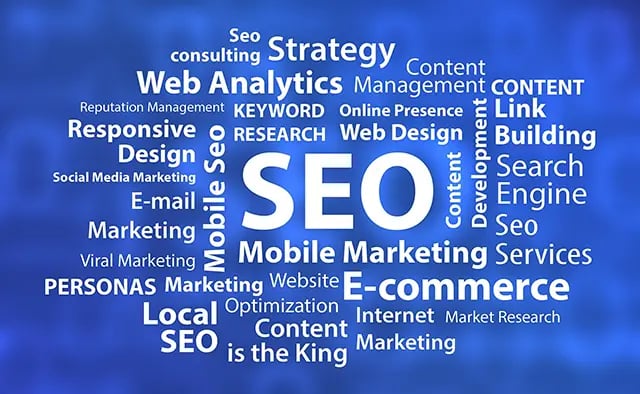
“You’re doing everything in one place”
The great thing about doing your marketing campaigns on Hubspot as opposed to a multitude of different technologies is that you're doing everything in one place. This means that you have a Return on Investment at each stage and by communicating at each stage of the funnel, not only can you see what is working, but very importantly, you can see what is not working. By being able to identify what is not working, you can eliminate it and double down on the methods that are working. This has been the unique selling point of Hubspot and one of the key reasons why the business has grown to where it is today.
I'm going to talk about Hubspot’s story of growth. We're going to be talking about Growth Driving Revenue, Sales Process and how to grow your business in 2019 and beyond. Also a little bit about a metaphor comparing the funnel metaphor, which we no longer use by comparison to the flywheel metaphor and thinking about growing your business into the future.
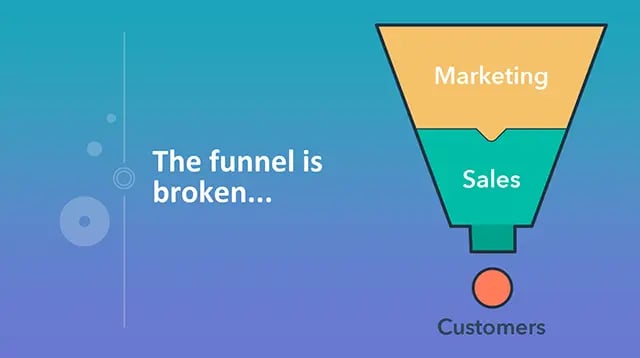
When it comes to growing our own business, we tend to use our technology. We think about certain metaphors and we implemented certain things when I started the business back in November 2013, we were down in revenue by about a $150 million run rate.
The business had been going on a thing for approximately eight years. Brian Halligan and Dharmesh Shah, our two co-founders of the business met while studying an MBA at MIT in Boston. Dharmesh had a blog at the time and identified that he was getting huge traction in terms of leads about this blog and they coined the term inbound marketing. He wrote a book about it and then decided there's no actual real marketing platform out there today that helps people and businesses generate leads.
“Today we have 56,000 customers, we have nearly 3000 employees and we're about to open our eighth or ninth office in Paris next month”
They identified and became very much forefront thinkers in this particular field and noticed outbound marketing was simply no longer anywhere near as effective as it once was.
They developed a marketing app which was the key foundation of our success around a concept, what is now known as an inbound marketing methodology. Today we have 56,000 customers, we have nearly 3000 employees and we're about to open our eighth or ninth office in Paris next month.
We have almost 170,000 academy certifications and half-year quarterly revenue. We are a business that has a run rate of almost $600 million by the end of 2019 and that's what we're projecting potentially. We are only one of seven businesses in the world today that are growing at a run rate of 40% and are more than $500 million in revenue rates.
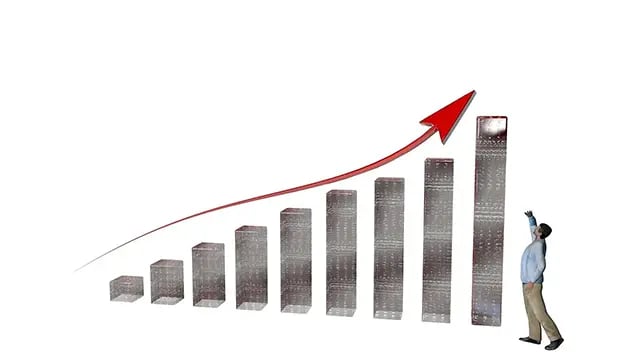
“There's a lot of value about the funnel, but there's more to that.”
There's a lot of growth and the reason is predominantly because we do things that we tell our customers to do. We ultimately deliver and create a huge amount of value for our customers. The funnel shows customers as an output however, customers aren't just an output, they're also an input.
The businesses are built to grow big and fast and what happens post-sale doesn't necessarily matter. Customer experience very much becomes an afterthought. I'm probably guessing that most of you use the funnel and trust in the funnel. I'm not suggesting that it doesn't work. There's a lot of value in the funnel, but there's more to that.
"When we came to the start of each quarter, every year we were back at ground zero."
I used to work in a financial services company over 10 years ago and the manager that I worked for at the time, we would sit down with the marketing team. I was a rep and many others and he would try to rinse every ounce of leads from the marketing team and from our kind of prospecting, every quarter.
He would say that the sun rises and sets in the same quarter and what he meant by that was, we have just got to make the most of it from the standing start every quarter. It did work. The only problem was that it was a very tough environment to be in and we had a high turnover of staff.
When we came to the start of each quarter, every year we were back at ground zero. Some of you in the business feel that sense of we don't necessarily have momentum here.
Having said that, if you are successful at really developing and implementing an inbound marketing campaign for your own business, then you should have assets where you're creating remarkable, relevant content for your target personas. You will then have this evergreen content.
I was asking Brian this yesterday, I'm not sure how many leads are generated every month now, but it's certainly 50,000 leads per month. Probably about 90% of the leads that we generate don't come from content that we created this week, last week or the month before. It's typically over 12 to 13 months ago that content was created and that's the whole thing about the evergreen flow of content.
Your marketing team could potentially take a month off or even two months off and their sales team isn't going to see any effect about the leads coming through.
One of the reasons we want businesses to think about moving away from the funnel is because not only does it only show the customer as an output and not an input but it doesn't capture the sense of momentum that we should be thinking about generating about all of our businesses.
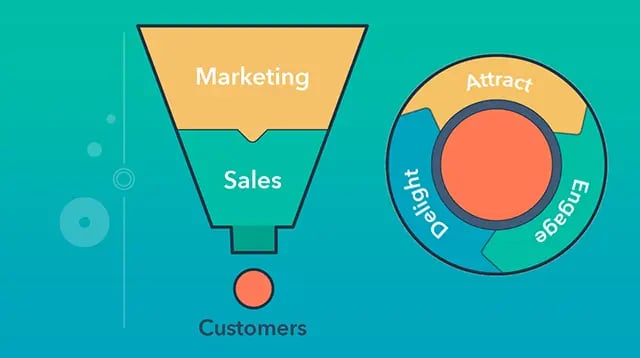
That's where the flywheel comes into play.
Instead of talking about the funnel, we're talking about the flywheel. It's a powerful metaphor. It's a machine that was designed by James Watt over 200 years ago. It powered the industrial revolution here in Britain and around the world but the invention is a highly efficient machine capturing, storing and releasing energy. That's why Brian Halligan identified the flywheel as a really good metaphor for thinking about how to grow your actual business as opposed to using the funnel.
“The more force you apply to the flywheel, the faster it goes, the faster it goes and the faster your business is going to grow”.
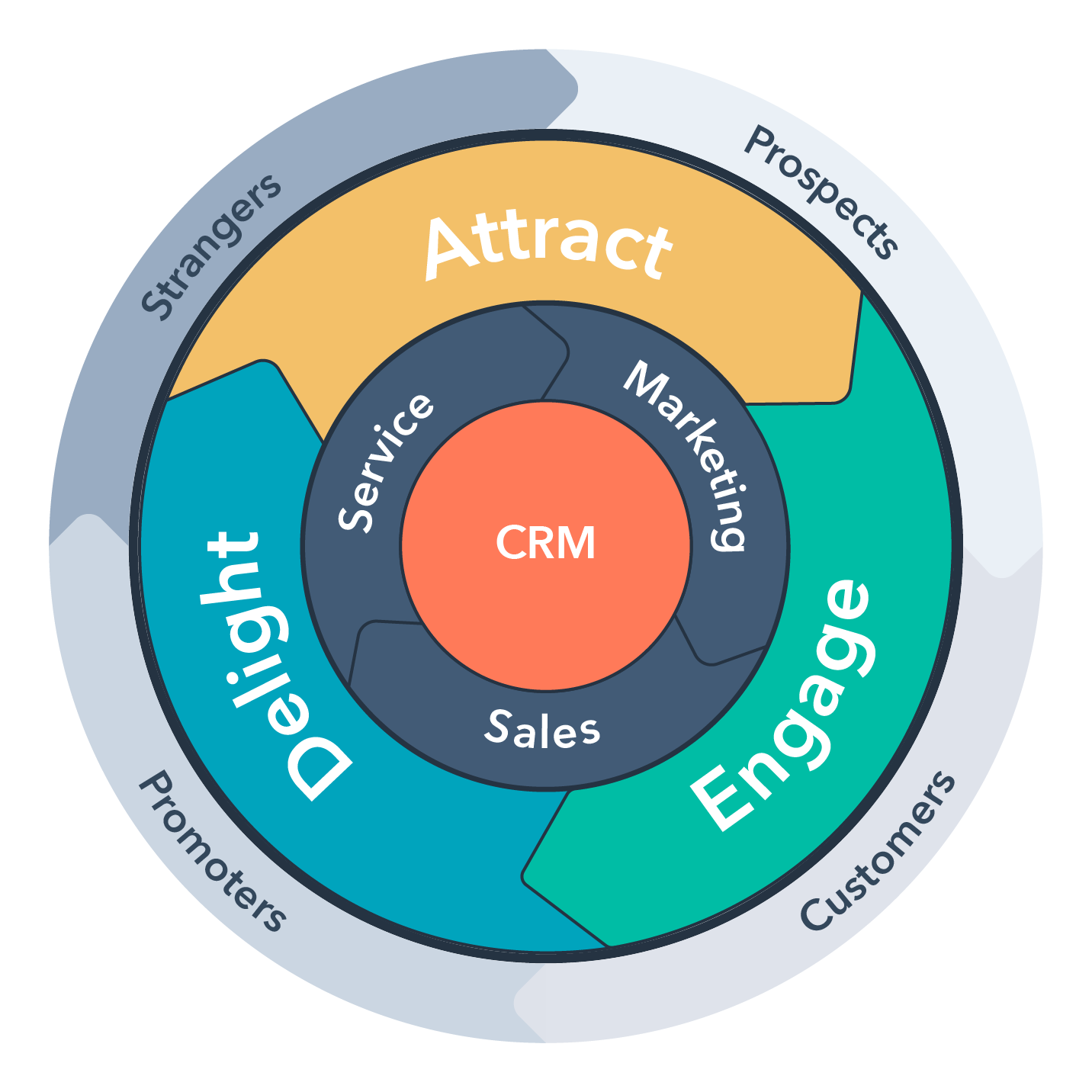
When we think back a little bit in terms of historical context, back in the 1990s sales reps had way more information. Customers didn't have access typically to pricing pages or the internet so it enabled the sales rep to build trust with the customer. It made a lot of sense that if you are a business owner, and invest in hiring salespeople; you're going to get a big momentum in terms of your own business in terms of growth.
We roll forward to the early 90s and at the time, Halligan and Dharmesh identified the concept that I found was broken and the inbound is much more effective. Essentially marketing became a bigger driving force in many industries. The competitive advantage went to marketers who can think with their brains to create this relevant, remarkable content and drive an audience to their own business.
But what we're now finding is the biggest driver of growth is not necessarily our marketing departments in terms of creating this remarkable relevant content. If the actual customers themselves, word of mouth delighted customers ultimately they are the biggest sense of driver of growth.
This is what we need to be thinking about in terms of how were we going to make this flywheel spin faster and grow our own business.
What accounts for the momentum and energy that we will be able to derive from your flywheel?
- How fast we can spin it?
- How much friction is there?
- How big they can ultimately get?
What area has the biggest impact on what is going to drive this?
This will give you an example of customer success in Hubspot. When we began to start adopting the flywheel approach, decisions were made very early on at really doubling down and investing not necessarily in marketing but in customer success. We wanted to make sure that our customers were having a phenomenal experience using the product and extracting the maximum value from the actual product itself.
That meant, that if they're able to derive value from the product, they're much more likely to talk about it and when they talk about if they're going to drive more referrals and more customers back to the actual business.
Based on data that we've conducted about surveys, 55% is based on word of mouth, customer references and media articles. All of these here are based on not what your marketing department is doing, but it's based on what the world is saying about your product or service. The question to ask yourself is:
What fuels word of mouth?
By focusing on the flywheel approach, you have to look at each part of your business ultimately to have an improved customer experience. So customer experience is the key to helping word of mouth for your actual business.
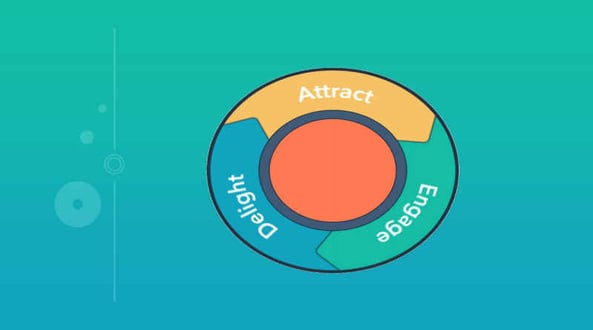
With the flywheel, it puts the customer at the very centre every time. I want to talk about how Hubspot is thinking about our flywheel. Why not check out the Hubspot blog, there are some tools that you can use that can help create your flywheel with your own business.
Depending on your business type, the business model doesn't necessarily mean you'll only have one flywheel. We might have several different flywheels throughout your actual business, but what we have done as a business we've looked at the attract stage. We use inbound marketing principles to get our wheel spinning to provide value before we extract value.
We're heavily invested in providing free content at the draft stage using blogs, and academy resources, driving the audience, our target persona to our actual business in the first place through our free content. This is what we're doing about the attract stage, getting the flywheel spinning at the very first stage.
Engage and this is something that we've always been doing since I've been at Hubspot, it has always been about the attract stage, but we haven't thought a huge amount about the next two parts. If we think about the engaged stage, what we're now doing is we want to make it easier for our prospects to engage and try and test our software. For example, when I was at Hubspot, the trial was 30 days.
You could get all the functionality but absolutely zero customer support. It was a very bad experience with the customer and what you would think would be a brilliant form of lead, in terms of somebody downloading a trial, actually became very poorly.
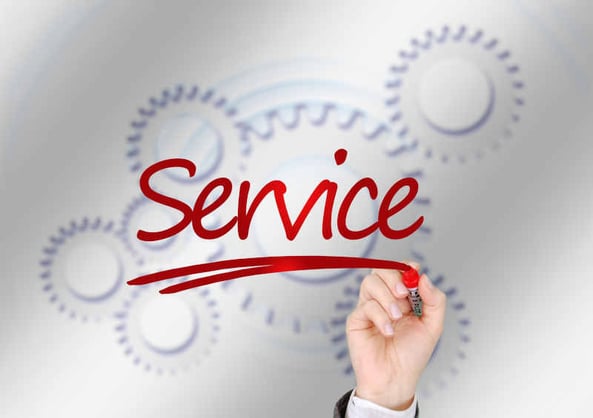
Why?
A bad customer experience?
The customer was not getting a good customer experience. We'll be looking at your signup process. We began then by helping to enable our customers to download the software for free. A very light version of the software for free would be an example of our free sales CRM and also a light level of customer support, to make sure that they're having a good customer experience.
We begin thinking about how can we help our customers begin to talk about the product. What we're doing here is about a mix of guided and self-service education, paying customers to have access to an implementation specialist.
Our partners and their partner communities not only get access to an implementation specialist but also access to the likes of Brian who is our Channel Account Manager. He is somebody who's going to teach you how to sell and potentially restructure your business to make you a very successful Hubspot partner.
We'll get access to the knowledge base, which is very extensive collateral in terms of the knowledge base that can use these academy certifications. These are the three key areas that we focus on about really driving the power and the force of Hubspot's actual flywheel.
Some things can ultimately slow down the flywheel.
- If you want to drive the flywheel, you can make it go fast
- If you start losing customers
- Customers start having bad customer experiences,
- The product potentially crashes
All of these things will ultimately cause friction and by more friction, the slower the flywheel will go. By adopting the flywheel as a metaphor, not only are we looking at things that will ultimately drive the speed and traction of our business but we're also looking at trying to identify the elements of our business that are causing friction.
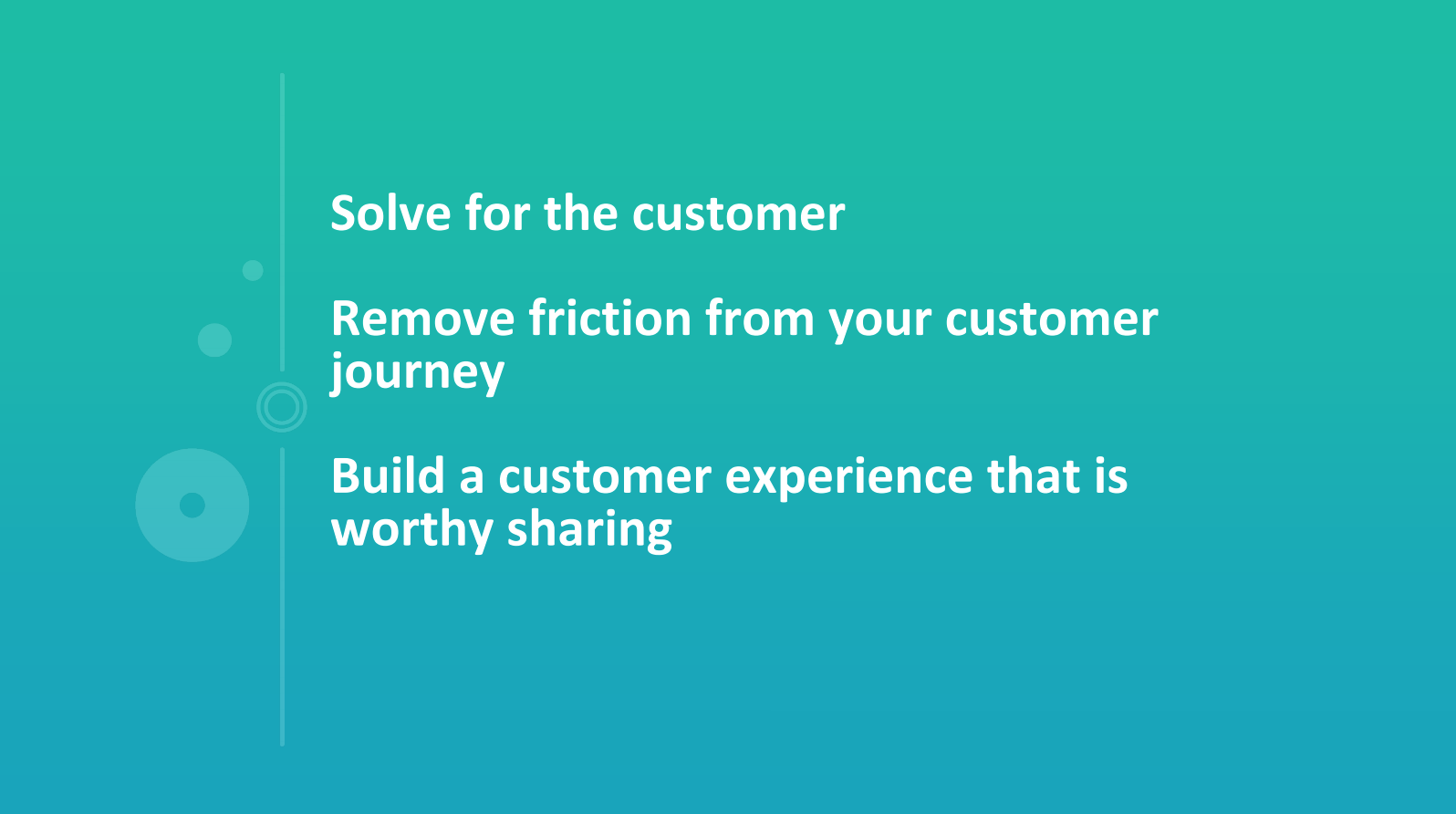
How do we reduce friction?
You should begin to ask yourself?
- Is our customers utilising our products to their maximum whereby they can get the maximum value out of the product?
- Are we providing enough customer support?
- The signup process for our product or service, is it quite complicated?
- Are our customers finding it difficult to get the information that they want from our websites?
For example, the pricing page, these are all elements of your business that can cause a lot of friction.
- Internally, are your teams misaligned?
Check out this article on How to align your sales and marketing team
One of the things that we brought about Hubspot, we've often had a misalignment between the sales and marketing teams. Most of you can account for it in your careers or whether it be in your business today, so what we've coined in Hubspot is to bring together a marketing and sales team.
“We call it Smarketing. I know it's very American, but it works”.
Another element about thinking about our business is that if we look at the attract stage, that’s what comes down to the marketing focus. So what we did as a business we used that. Since our business leaders have thought about the flywheel approach, they have begun to think much more holistically about the business.
One of the things will be about marketing. Marketing would be focused on the acquisition and we identified this by adopting the flywheel. If we have customer churn, we're going to have friction and that's going to slow the growth of our business dealings.
What they've done here is that they look at not only acquisition but also retention through the customer marketing team and customer communications.

Why is communication so important?
We've identified that a lot of our customers and even prospects, were getting communications from multiple areas of the business, product, sales, service and finance in some cases and some other cases, they might even receive four or five emails from different parts of the business all on the same month or week.
We've not only developed one centralised team with a communication strategy to all of our prospects and customers but we have ultimately designed to try and improve the customer experience review site.
A lot of people will go to review sites or third-party sources in terms of figuring out - whether is this good for my business or not. We didn't have any dedicated resources to look at a strategy around review sites and now we do. Conversion paths.
“Now we're looking at terms of prospects and how they can chat directly to us. “
We used to only up to probably about 18 months ago if you wanted to submit your details onto the Hubspot website, you would have to go through a form. Now we're looking at terms of prospects and how they can chat directly with us.
They can fill out a lead generation form or they can book directly in a rep's calendar right from our website, which is a cool tool to use. Booking time on someone's calendar is what you'll find is easier than when a prospect is trying to engage in other ways.
They don't necessarily want to go over it and back about emails and so forth. They just want to book some time in somebody’s calendar. Live chat is only available when the team is online. Now through our investment in chatbots, they have access 24/7. Languages and most marketing content were the only English only.
Now we've localised it for many different languages such as Japanese, French, and Spanish but that's some of the things that we're doing in terms of the attract stage by adopting the flywheel approach.
What are sales?
The whole area around engagement about Hubspot's flywheel, customers couldn't buy directly from our website so we changed that. You want to remove friction; we're trying to sell something, so let's make it easy for them to buy. This again was changed within the last 12 to 18 months.
Internal reps in some cases weren't bringing in the correct customers. They weren't doing right before the customer because they were compensated only on commissions for new business. We changed the structure. There's not a clawback after a certain period if a customer churns.
It was very sore on the rep but extraordinarily effective for Hubspot and improving its actual churn rate.
Lead rotation and some cases leads just weren't being assigned because they couldn't find the correct rep. That has now all changed by improvements that our sales operations team have made guaranteeing that all reps and all leads will ultimately be rotated.
Surprisingly given the size of the business up until the start of this year, we didn't have a team that sold into our install base. So a business using our software already, we didn't have a dedicated team calling into that business and properly understanding their needs in terms of their growth, how to get the most out of HubSpot, or in their expansion and whether would they get more use out of beginning to use additional elements of our actual platform?
Lastly, if we think then about the service component and the services where the delights are with some of the things that we've done about service. A big one has been the customer feedback loop which is around NPS surveys, which we only conducted once a quarter. Now we've created a voice for the customer team. Dharmesh has spearheaded this through the customer code.
Have any of you downloaded the customer code desk? I would highly recommend it. Dharmesh Customer Code Deck
The NPS is now rooted in real time to appropriate product managers and this means that they can act on it in real time as opposed to having to wait until three or four months every time. We're constantly improving the Hubspot Academy experience. The community customers could only ever get support from the Hubspot support team; now customers can ask each other questions about the Hubspot community.

This is what Hubspot, some of the initiatives that Hubspot is and thinking about the delight components. I would encourage all of you to begin to adopt the flywheel mentality method about your own business.
Because it answers,
- How can I grow the business?
- How can I move it faster?
- But at the same time, what is stopping me from moving faster?
Remove the friction about your own business. So you're aware of everything that revolves around the customer, which is our CRM platform. We then have our marketing platform, sales platform, and then our servicing platform.
All for the customer, check out the Customer Code Deck that Dharmesh has put together; remove friction from your customer journey and we begin to think that by building on the customer experience because it's going to be word of mouth in the future, that's going to drive growth and revenue for your business.
I suppose back a little bit of a funnel about the sales process, but the intricacies and the importance of a sales process and particularly thinking about qualifying out as equally as important as qualifying in.
Thank you very much.
Resources





